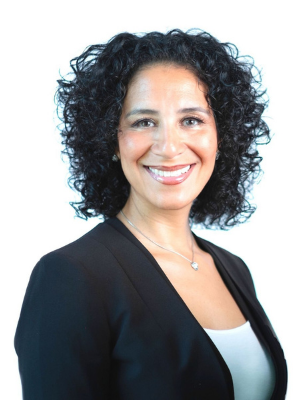 “It’s transfer of knowledge, it’s paying it forward, it’s saying ‘here are the unwritten rules that you need to know that not everybody is going to tell you’,” says Monica Marquez. “Why don’t you learn from my mistakes, and then maybe you can get here in half the amount of time that I did?”
“It’s transfer of knowledge, it’s paying it forward, it’s saying ‘here are the unwritten rules that you need to know that not everybody is going to tell you’,” says Monica Marquez. “Why don’t you learn from my mistakes, and then maybe you can get here in half the amount of time that I did?”
As an Equity & Inclusion expert, Monica has previously worked in the cultures of Goldman Sachs, Bank of America, Ernst & Young and Google, with a focus on pioneering efforts to support women to advance through the most tricky parts of the career path.
Advancing the “Frozen Middle”
“I’ve had a natural affinity towards pursuing a career that focuses on diversity, equity and inclusion,” says Marquez. “The whole theme of creating opportunities and a sense of belonging, and helping people to accelerate their success, has always been core to what I loved to do and help organizations do at scale.”
Beyond Barriers takes a campus to C-suite approach: “What happens throughout a woman’s career trajectory that causes so much attrition from the entry level to the top? For more than a decade, over 50% women have been graduating from US universities and colleges, outpacing their male peers. How is it then, that only 8% of women hold C-suite roles in Fortune 500 companies?”
Marquez’s passion has been to understand the systemic barriers at play and how to navigate them to accelerate success: “Companies do a really good job of recruiting women in the early stages, but they don’t do a good job of supporting them and helping them grow and stay, often losing them as they are rising up.”
Despite so much front-end investment in talent, Marquez feels organizations often fail to support women through the “frozen middle” when the challenge of integration of work with new motherhood becomes a huge adjustment for many, and when attrition peaks.
She notes that many women are passionate about coming back until they return to experience being sidelined—so they are both pulled by their new responsibilities and pushed out by the organization. After the second child, the percentile of women opting out or taking a break goes way up.
Marquez has found that often a dance of projected assumptions goes on between both sides of the coin. Women often don’t feel their managers/organizations will be supportive of their boundaries or needs. Organizations often assume what women will want for themselves, or be available for.
“It’s partly the assumptions, stigmas, stereotypes, unconscious biases that managers and leaders have at play, rather than just open communication,” she says. “The conversation needs either the woman being confident and having clarity of what she wants and being able to ask for what she wants, or the leader asking the woman that question and giving her the opportunity to answer for herself.”
Marquez has seen that when the tough conversations actually happen, things like flex schedules and promotion plans can be arranged. It’s after all more efficient to support a woman to stay and keep progressing than to bring in somebody entirely new from scratch.
“Don’t be afraid to say this is this is what I want and don’t be ashamed of your ambition. You shouldn’t be told you either choose your ambition or you choose the family. It doesn’t have to be that way,” advises Marquez, who also points out: “Companies do invest a lot in development with women, but they sometimes have to be strategic and target the high performers. If you were to get to these women a lot earlier, you would have more mid-career women make it through to the top.”
Pioneering the Returnship® Program
Perhaps Marquez’s proudest accomplishment is the Returnship® Program she began back at Goldman Sachs over a decade ago, to help companies retain experienced women and to help women gently reintegrate back into work after maternity leave.
“Back then, there was a significant stigma if you left the workforce and tried to come back in. The gap was a huge mark on your resume, and usually employers would overlook you,” she notes. “There’s a hidden talent pool of women that companies are losing out on because you have this traditional bias against the resume gap. And we started thinking: how do companies hire in the first place?”
Marquez and her team adapted the internship experience and introduced the Returnship® program in financial services at Goldman Sachs. Across a 10-12 week stint, women came back into an office, usually taking on one focused, substantial project in a team who held an open position. Women were able to reacclimatize through a first dip back into work mode and teams received experienced help on standing projects. If the practical trial showed a mutual fit, full-time placement would result and regardless, both parties benefitted.
“In our first few pilots, we had a placement rate in the 90th percentile, and the majority of the 10% who didn’t get placed were women who chose to stay out, after realizing that they weren’t ready for full-time work,” says Marquez. “It’s the fulfillment of helping people gain opportunity when the doors are all closing that’s been my guiding passion.”
Being Latina in Corporate America
Marquez notes that Latina women face stereotypes based upon gender and culture: such as the loud Latina, the overly emotional Latina or the family-first domestic Latina mother.
She’s experienced herself that being a “first generation corporate” can be very isolating, allowing space for imposter syndrome and self-doubt, often because Latina women are the “only” Latina around in the context and because they often do have different influences and voices at home, sometimes intergenerational, due to the cultural loyalty to family.
Some cultural influences can be resourceful to help Latina women thrive and others can be limiting.
While women of color were less prevalent in the Returnship® program, the team found ironically (vs. stereotypes) that Latina women were less likely to have opted out of the workplace for home responsibilities than their white peers, precisely because they had a strong Latino family structure and childcare support within their extended family.
“The cultural norm of the tight-knit Latino family unit, where they maintain a sense of a village to raise a family, helped some women stay employed opposed to having to opt out,” notes Marquez.
On the other hand: “We come from various Latino cultures where work ethic is a really big deal: put your head down, work really hard,” says Marquez. “However, you learn quickly that in the corporate world, you’re going to get overlooked if you just keep your head down and work hard. You have to learn self-promotion and have the flexibility to go against the grain of what you’ve always been taught.”
And so, Marquez has created employee resource groups to help with opportunity/cultural gaps such as coaching soft-skills and self-promotion among first generation college or corporate individuals.
Acculturate, not Assimilate
Having always been fascinated with cultural differences and their influences on decision-making, Marquez impresses upon Latina women that “there’s a fine line between assimilation and acculturation”.
“You have to be very careful when you go into an organization that is predominantly white male cisgender-led that you don’t assimilate too much, to where you’re contorting yourself into a pretzel in order to belong. You want to keep some authenticity,” says Marquez. “I usually tell people that you have to acculturate and embrace every organization you belong to. They each have their unique culture and define success in a different way. You have to look at every organization like its own country that you visit every day.”
She suggests getting underneath what characteristics are driving success in your organization and then emulating those characteristics by adopting strategies that are right for you within the organizational “cultural” context, without compromising your own truthfulness.
For example, colleagues may go to the local pub to network, but it’s narrow-minded to think you have to stay two hours after work as the requirement to be successful. The value is developing relationships, and you can figure out a way to develop more depth to informal connections through breakfast and lunch invitations during work hours.
“It’s figuring out where you can set your own boundaries. You acculturate opposed to assimilate, and you challenge them on the ways it happens,” she advises. “The important thing is the relationship building. It’s not the happy hour.”
“Don’t assimilate and lose who you are. Instead, acculturate and hold onto those core values of your culture, because that also enriches the organization,” she notes. “The representation of diverse cultures brings about an organic diversity of thought that is needed to create bigger and better solutions for organizations.”
Less Certainty, More In-The-Moment Agility
“Women have a tendency to be very certainty driven, and they end up not taking as many risks and opportunities. It’s like that quote ‘doubt kills more dreams than failure ever will’,” says Marquez. “Women need to be much more open to taking the opportunity and embracing just-in-time learning, so they don’t rob themselves before they try.”
Marquez feels women disadvantage themselves by feeling they will be safe only if they already know everything. Whereas men’s willingness to put their name in the hat, dive in and then figure it out means they advance more quickly.
She recommends women weigh the risk and reward, and if they can live with the downside, just go for it: “Women will second guess and short-change themselves, but we are remarkable and extremely resourceful. You have to look at these opportunities and tell yourself, ‘I only check two boxes out of ten, but I’m going to put my name in the hat because this is my North Star. This is where I want to go’d.”
Noting that the average shelf life for a new skillset is now eighteen months, Marquez feels women should tap more into their natural agility to change and juggle, and embrace more just-in-time learning.
For her, a key component of accelerating gender equity is simply facilitating the transfer of knowledge: “If I knew then what I know now, I would have gotten here so much quicker and probably in half the time that it took me to become a senior leader,” reflects Marquez, who is doing all she can to bring others up behind her.
To learn more about how Monica and her company (Beyond Barriers helps organizations retain and develop female leaders), visit www.iambeyondbarriers.com.
By: Aimee Hansen


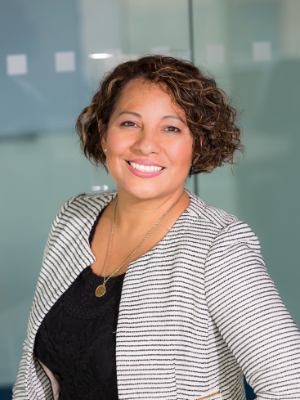

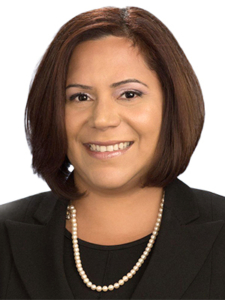
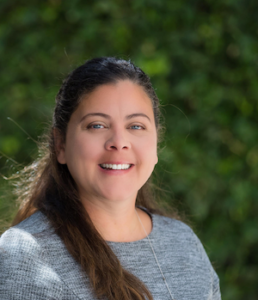
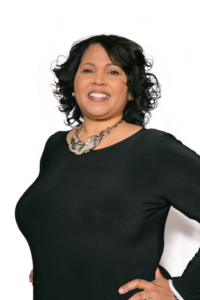
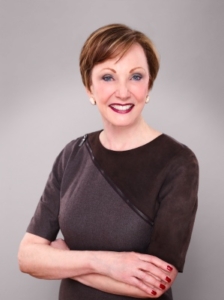 You have to have trust in your intuition; it can be easy to listen to all the buzz around you, but paying attention to your inner self will always lead you down the correct path, says Diane Ramirez.
You have to have trust in your intuition; it can be easy to listen to all the buzz around you, but paying attention to your inner self will always lead you down the correct path, says Diane Ramirez.
